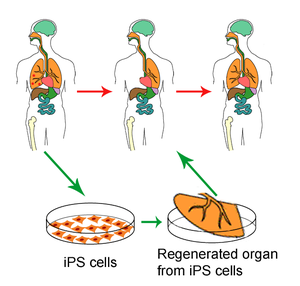While the US Court of Appeals has lifted (temporarily) the ban on stem cell research imposed by Judge Lamberth on my birthday (not the kind of present for which I had hoped), the case will probably proceed to the U.S. Supreme Court to settle the issue. As such, firms are reluctant to employ fetal stem cells as part of their research protocols. Instead, the use of pluripotent stem cells that can differentiate into three different germ layers (endoderm- stomach and GI tract lining, lungs; mesoderm- muscle, bone, blood; or ectoderm-epidermal or nervous system) are being used; there are no legal restrictions on their use.
As a means to save money- and to determine potential deleterious effects early and safely- drugs are now being tested using human tissues generated from stem cells. Companies such as Pfizer, Roche, and GlaxoSmithKline are employing tissues derived from pluripotent stem cells upon which they can test new drugs. The goal is to determine- early on- if there are potential side effects to these new drugs. Often, development proceeded beyond the laboratory and animal testing only to find deleterious effects. Using tissues developed from pluripotent stem cells is one way to get those results earlier.
It had been found that stem cell generated heart cells and animals both had irregular heartbeats develop after an antiviral drug was administered. (The antiviral drug development had been abandoned after the animal testing; stem cell-derived heart tissue was tested to see if the results mimicked the animal testing- it did.)
This nascent development in stem cell usage is being fed by two vendors (at present) Cellular Dynamics International (now part of FujiFilm) founded in 2004, provides cardiomyocytes now and will be producing liver and nerve tissues generated from pluripotent stem cells. Their stem cells are derived from blood or skin. iPierian, only two years old, has chosen a different approach for the derivation of their stem cells. (Ipierian has been subsequently acquired by Bristol Myers Squibb.) They have elected to obtain their stem cells from subjects who have ailments (diabetes, heart disorders, Alzheimer’s, among other choices).








hello!This was a really wonderful blog!
I come from milan, I was fortunate to seek your topic in bing
Also I get a lot in your topic really thank your very much i will come every day
I hear that abortions can be good in the sense of stem cell research.But I do not know what that is, so if someone could explain to me what it is and how abortion would benefit for stem cell research that would be great. Thanks!
That has no bearing on the subject of this article.